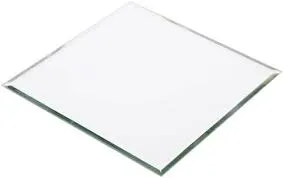

Understanding Low-E Tinted Glass Benefits and Applications
In today’s rapidly changing world, energy efficiency has become a critical focus for both builders and homeowners alike. One innovative solution that has emerged in the realm of construction and renovation is low-emissivity (Low-E) tinted glass. This specialized glass offers a unique combination of benefits, making it a popular choice for windows and glass doors in both residential and commercial settings.
What is Low-E Tinted Glass?
Low-E tinted glass is a type of glass that has been treated with a microscopic thin coating. This coating reflects heat while allowing light to enter, effectively regulating indoor temperatures. Unlike traditional tinted glass, which merely darkens the room and reduces glare, low-E technology enhances energy efficiency by reducing the amount of ultraviolet (UV) and infrared light that passes through the glass without compromising visible light transmission.
The primary function of Low-E glass is to minimize energy loss. In colder months, it reflects indoor warmth back into the living space, while in warmer months it blocks outside heat from entering. This dual action not only contributes to a more stable indoor climate but also reduces the workload on heating and cooling systems, leading to significant cost savings on energy bills.
Benefits of Low-E Tinted Glass
1. Energy Efficiency The foremost advantage of Low-E tinted glass is its ability to improve energy efficiency. By regulating temperature extremes, it enables homeowners and businesses to maintain comfortable interior environments year-round with less reliance on HVAC systems.
2. UV Protection Low-E tinted glass effectively filters out UV rays, which are responsible for fading furniture, carpets, and artwork. This additional layer of protection helps maintain the aesthetic appeal of a space and prolongs the lifespan of interior furnishings.

3. Glare Reduction For buildings with large windows or glass surfaces, glare can be a significant issue. Low-E tinted glass minimizes glare while still allowing ample natural light to enter, creating a more pleasant atmosphere within the space.
4. Aesthetic Appeal Available in various tints and finishes, Low-E tinted glass can enhance the visual appeal of a property. Its sleek and modern look can complement contemporary architecture while providing a sense of privacy.
5. Sustainability Additionally, using Low-E tinted glass contributes to environmentally sustainable building practices. By reducing the energy demand of a structure, it lowers greenhouse gas emissions associated with energy production.
Applications of Low-E Tinted Glass
Low-E tinted glass is suitable for a wide range of applications. It is commonly used in residential settings for windows and sliding doors, creating comfortable living environments while enhancing energy efficiency. In commercial buildings, it is often employed in storefronts, office partitions, and curtain walls, providing a balance of natural light and reduced energy consumption.
Moreover, in energy-conscious designs such as passive houses, Low-E tinted glass plays a fundamental role in achieving energy performance goals. Architects and builders often specify this glass for new constructions and renovations to promote sustainability.
Conclusion
In conclusion, low-E tinted glass stands out as an innovative solution that merges functionality with aesthetics. With its impressive energy efficiency, UV protection, and glare reduction properties, it addresses several of the challenges faced by modern buildings. As energy conservation continues to gain importance worldwide, the use of Low-E tinted glass is likely to increase, offering a smart choice for those looking to enhance their living and working environments while contributing to sustainability efforts. Whether for a new build or a renovation project, considering Low-E tinted glass is a step towards a more sustainable future.